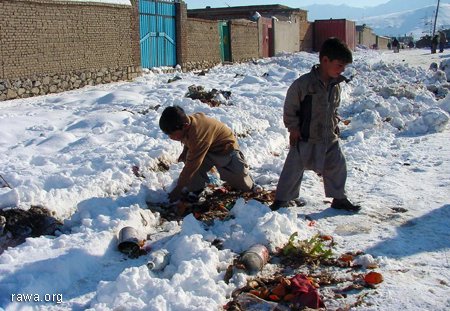- Most of the households in cereal surplus areas in the north, northeast, northwest, and western Afghanistan are not expected to have acute food insecurity, except for Badakhshan provinces. This is a result of second consecutive year of good harvest, carry-over stock from last year, and the comparatively high price of wheat which are expected to increase profit margins for producers.

UKPA, Aug. 19, 2010:According to a latest research, Afghanistan tops the list of 163 countries which face the risk of food shortages. The ongoing violence and the country’s vulnerability to climate extremes like drought and flood have made food security hit rock-bottom.
- Internally displaced households and repatriated Afghan refugees from Pakistan in cereal deficit areas in east, south, and central Afghanistan are expected to be moderately to highly food insecure. There food security condition will worsen as Afghanistan's lean season starts in January. With higher food prices because of regional wheat production and market disruptions, the lean season is expected to be worse than last year. There are an estimated 40,000 conflict-driven IDPs from Nadali and Marja districts of Helmand province, Marrawara district of Kunar province, and Qaisar district of Faryab province. Total repatriated Afghan refugees from Pakistan are estimated around 100,000 people.
- Wheat market prices in September 2010 remain lower than the five-year average in all reference markets with the exception of Kabul and Kandahar where prices were slightly higher. Faizabad was 43 percent below the five-year average. Hirat prices are 31 percent below the five-year average. Nevertheless, market prices have steadily increased since June 2010 when the Pakistan and Russian banned wheat exports and demand for wheat from food deficit countries has focused on Kazakhstan.



